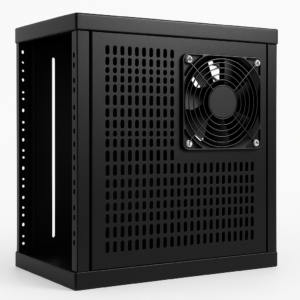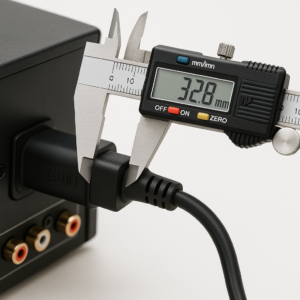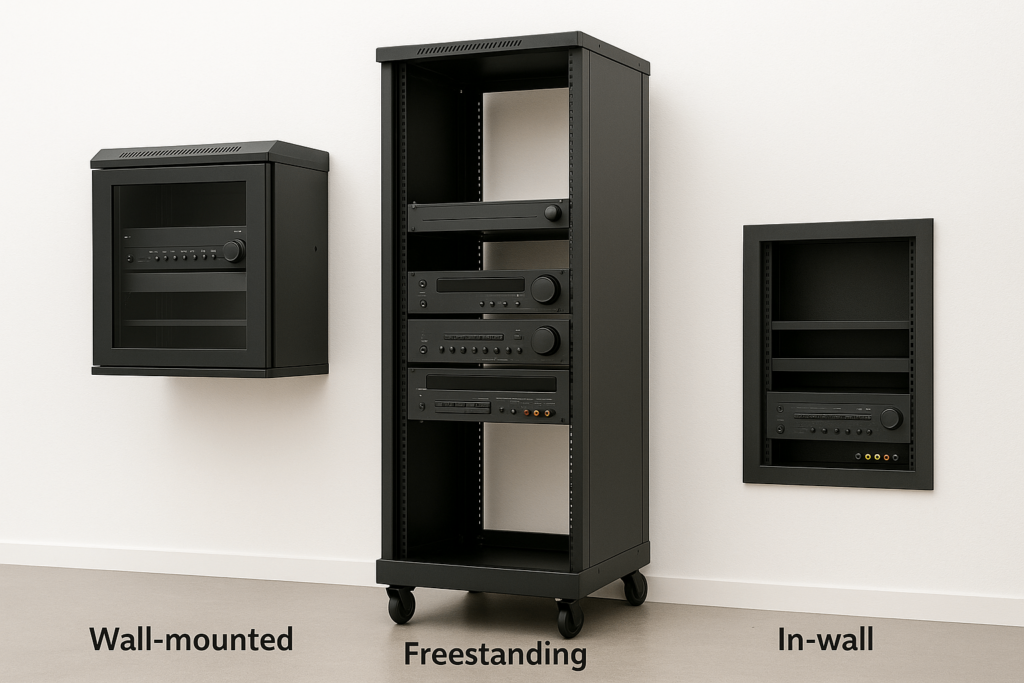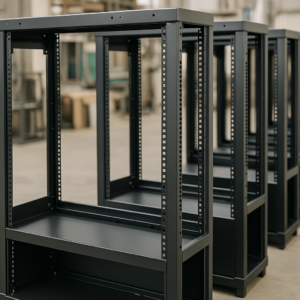Introduction: The Engineered Foundation of Professional AV Systems
In professional audio-visual integration, the foundation of any reliable system is not the processor or display, but the infrastructure that houses, protects, and manages every critical component. While end-users may use terms like “TV stand” or “media console” for furniture designed for basic storage, professionals understand the profound difference. A dedicated TV equipment rack is not furniture; it is an engineered ecosystem.
This professional-grade framework ensures that an entire system performs optimally, lasts longer, and is serviceable over its lifecycle. Moreover, a well-specified rack communicates professionalism, system readiness, and technical confidence to clients and technicians alike.
For system integrators, wholesale buyers, and procurement managers, selecting the right audio visual rack is a critical business decision. It impacts installation efficiency, client satisfaction, and the long-term reliability of every deployment. Therefore, this guide offers a manufacturer’s perspective on the engineering, material science, and strategic planning required to specify and implement a rack solution that stands as a testament to quality and performance.
Foundational Principles: Why Professional Racks are a Non-Negotiable Requirement
The Acoustic Argument for a Dedicated Rack
A frequently overlooked variable in system performance is room acoustics. Any large, solid object placed between the front speakers—such as a bulky media console—can create unwanted sound reflections. Consequently, professional acousticians have long advised that removing such objects from this critical zone is one of the most effective ways to improve center imaging and soundstage clarity.
The professional solution is to improve AV rack acoustics by strategically relocating the equipment. By centralizing all components within a dedicated rack placed to the side or in an adjacent equipment closet, you allow the speakers to perform in an acoustically cleaner environment. As a result, this architectural approach to system design can yield a significant improvement in audio fidelity.
The Silent Killer: Mitigating Heat Damage
Heat is the primary adversary of electronic components. The relationship between operating temperature and equipment lifespan is inversely proportional and well-documented. Specifically, industry studies consistently show that for every 10°F to 18°F (approx. 5.5°C to 10°C) rise in constant operating temperature, the long-term reliability of digital components can be reduced by as much as 40–50%.
A professional AV rack cooling strategy is fundamental to its engineering. Indeed, the entire structure is designed to facilitate thermal management, whether through passive convection or active, forced-air systems. Furthermore, this systematic approach to heat dissipation is non-negotiable for protecting the significant investment in electronics and ensuring long-term operational stability.

The Truth About Cable Management & Signal Purity
A disorganized mass of cables is more than an aesthetic issue; it is a direct threat to system performance. Specifically, when AC power cables are run in close, parallel proximity to low-voltage signal cables (like HDMI or Ethernet), they can induce electromagnetic interference (EMI). This interference may manifest as audible hum, visual artifacts, or data errors.
A professional rack provides the necessary infrastructure for methodical AV rack cable management. The frame is designed to facilitate the physical separation of power and signal cables, typically by routing them down opposite vertical rails. Consequently, integrators benefit from fewer troubleshooting calls and a more reliable end-product for the client.
The Buyer’s Playbook: How to Specify a TV Equipment Rack
The Value of Serviceability
Consider a common field scenario: a technician needs to troubleshoot a faulty connection. With equipment housed in a typical cabinet, this often involves a frustrating and risky process. Unfortunately, this lack of accessibility turns simple tasks into time-consuming, high-risk ordeals.
Professional racks are engineered for serviceability and AV rack accessibility. Many models feature heavy-duty casters or pull-out shelves, allowing a technician to gain unimpeded access to rear panels in seconds. Therefore, for any business managing multiple installations, this dramatic increase in service efficiency translates directly to lower operational costs and faster resolution times.
Decoding the Lingo: The 19-Inch Rack Standard
The professional rack ecosystem is built upon the 19-inch rack standard, first established by AT&T around 1922. Today, its specifications are formalized by the EIA-310-D/E standard, ensuring mechanical interoperability between equipment and racks from any compliant manufacturer. The “19-inch” (482.6 mm) measurement refers to the width of the front panel of rack-mountable equipment.
The vertical dimension is measured in Rack Units (U), where 1U equals 1.75 inches (44.45 mm). This system allows designers to plan layouts with mathematical precision. For example, a 3U amplifier and a 1U network switch will occupy exactly 4U of the rack’s total U height.
The 3-Step Sizing Formula
Incorrect sizing leads to installation delays and compromised performance. To avoid such issues, this three-step formula ensures the selected rack is a perfect fit for the project’s current and future needs:
- List Your Gear: Create a comprehensive bill of materials for all components. Document the height in “U” for each piece of rack-mountable equipment from its specification sheet.
- Calculate Total Height: Sum the total U height. Professional Best Practice: Add a buffer of 25–30% of extra space. This is a necessity for ventilation panels and future system expansion.
- Determine Depth: Measure the deepest component, accounting for connectors and cable bend radius. Add a minimum of 4 to 6 inches (10–15 cm) to this measurement. This extra equipment rack depth is critical for airflow and serviceable cable management.

Rack Installation and System Integration Considerations
Pre-Wiring & Bench Testing Before Installation
Before delivering the rack to the project site, a best practice is to conduct pre-wiring and bench testing in the factory or integration workshop. This step ensures that all connections work as designed, dramatically reducing on-site troubleshooting. Consequently, this also minimizes downtime and disruption for the client.
Wall-Mount, Freestanding, or In-Wall? Choosing the Right Form Factor
The physical format of the rack depends on application constraints. For example:
- Wall-Mount Racks: Ideal for smaller systems or space-constrained environments. These are often used in security or telecom installations.
- Freestanding Racks: Common in larger AV installations, data centers, or control rooms. They offer the most flexibility in terms of size and cooling options.
- In-Wall or Built-In Racks: Designed to blend with architectural elements. Often used in luxury residential or conference room applications.

Technology Integration and Smart Rack Features
Power Distribution and Remote Monitoring
A professional-grade rack integrates more than just shelves. It incorporates power sequencers, surge protection units, and remote monitoring tools. These features allow IT and AV professionals to control power cycles remotely, monitor energy usage, and receive alerts for thermal or voltage anomalies.
Security and Access Control
In commercial or public installations, equipment rack security becomes a concern. Lockable front and rear doors, tamper-proof hardware, and biometric or keypad access are increasingly standard. As a result, clients benefit from increased asset protection and compliance with data security protocols.
Environmental Sensors and Automation
Smart racks can be fitted with sensors to monitor temperature, humidity, and airflow. These systems can be integrated into centralized building management systems (BMS), enabling automation such as fan speed regulation or alarm triggering when environmental conditions deviate from the norm.
YISHANG’s Custom Rack Capabilities
As a specialized metal display rack manufacturer with over 26 years of experience, YISHANG offers full OEM & ODM solutions for global wholesale buyers. Our factory capabilities include:
- Laser cutting, punching, and CNC machining
- Bending, welding, powder coating, and surface finishing
- Design support, sampling, QC inspection, packaging, and delivery
We customize TV equipment racks using stainless steel (304/316), aluminum, and galvanized steel. Customization options include height (U units), depth, ventilation design, caster integration, branding elements, and finish.
Every project is backed by ISO 9001 and RoHS certifications, ensuring global buyers receive industrial-grade quality with factory-direct pricing.

Frequently Asked Questions (FAQ)
Q1: How deep should a TV equipment rack be?
Depth depends on your deepest component. For most AV installations, a depth of 20–24 inches (500–600mm) is sufficient, but always measure your gear and add at least 4–6 inches for cable management and airflow.
Q2: What’s the difference between a TV stand and a TV equipment rack?
A TV stand is furniture. A TV equipment rack is a standardized, engineered system for housing professional AV gear. It ensures better airflow, cable management, serviceability, and system longevity.
Q3: Does YISHANG offer custom logos or colors on equipment racks?
Yes, we offer custom powder coating (any RAL color) and laser engraving for logos, part numbers, or asset tags.
Conclusion
A professional TV equipment rack is far more than a metal frame. It is a mission-critical infrastructure component. When selected and implemented thoughtfully, it contributes to the longevity, serviceability, and acoustic integrity of the entire AV system.
Whether you’re designing for a boardroom, broadcast studio, or residential cinema, a well-engineered rack is the invisible hero behind every high-performance AV deployment.
At YISHANG, we combine engineering precision with manufacturing excellence, delivering rack systems tailored for serious integrators, distributors, and AV professionals.

